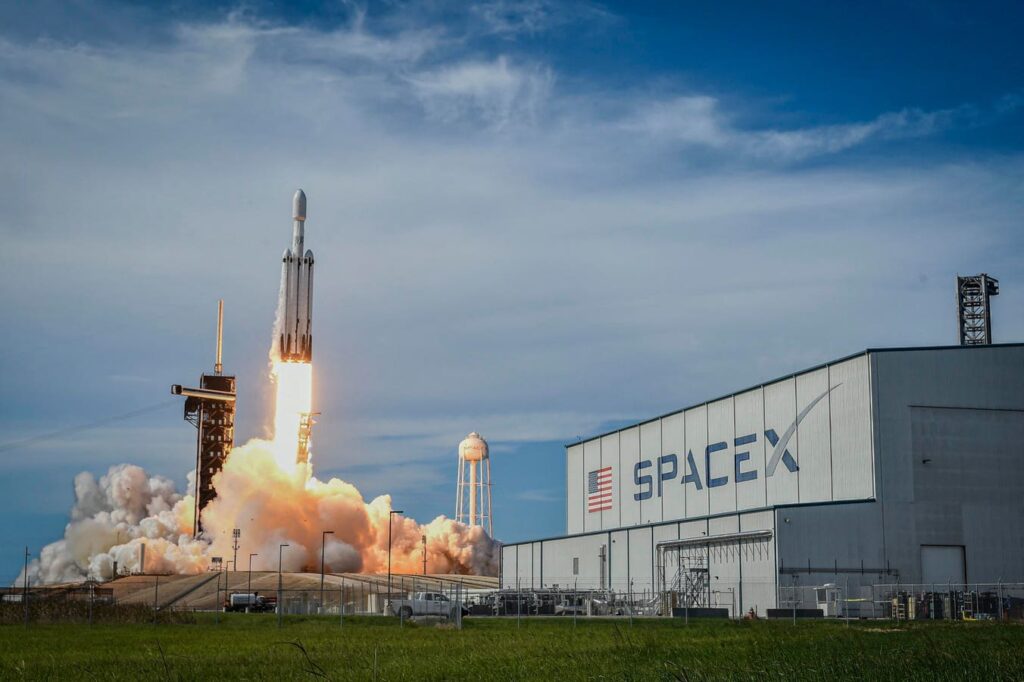SpaceX has recently achieved a staggering valuation of $350 billion, solidifying its status as the world’s most valuable startup. This estimation comes ahead of an anticipated tender offer later this month, where insiders expect to see a substantial increase from the previously reported valuation of $210 billion. Because SpaceX is privately owned, it does not publicly share its financial details, yet analysts leverage market data to approximate its revenue and earnings growth. For example, projections from Morgan Stanley suggest that the company’s current valuation translates into a price-to-sales ratio of 23.6 and an exorbitant price-to-earnings ratio of 308 for 2024. Nevertheless, these ratios are expected to decline significantly in the coming years; by 2030, analysts predict a price-to-sales ratio of 5.2 and a price-to-earnings ratio of 24, reflecting SpaceX’s aggressive growth and projected operational efficiencies.
The broader space economy is anticipated to soar to $1.8 trillion by 2035, positioning SpaceX to capitalize significantly on this prospective expansion. The company’s dominant market position is attributed to its cutting-edge technology, strategic vertical integration, and diversification of revenue streams, with particular emphasis on its satellite internet service, Starlink. While SpaceX’s valuation appears lofty, it faces constraints not in terms of capital but rather through regulatory challenges that could hinder its growth trajectory. As the company navigates these hurdles, it remains vital for SpaceX to effectively align its operational growth with market expectations to justify its high valuation.
Starlink has emerged as a pivotal component in driving SpaceX’s escalating valuation, with the satellite internet service experiencing explosive growth. Boasting nearly 5 million subscribers across 114 countries—a staggering 100% increase in just one year—Starlink’s ability to offer high-speed internet to remote and underserved communities has made it a market leader. Projections by Quilty Space estimate Starlink will generate $6.6 billion in hardware and subscription revenues by 2024, along with an EBITDA of $3.8 billion. This growth trajectory is supported by Starlink’s expansion into additional markets like aviation and maritime sectors. Furthermore, the Federal Communications Commission (FCC) has recently granted Starlink approval for direct-to-cell services on 7,500 next-generation satellites, paving the way for commercial-scale services in partnership with major telecommunications companies like T-Mobile by 2025, all while reinforcing SpaceX’s dominance in the satellite sector.
Simultaneously, SpaceX’s launch capabilities are flourishing, with an expected completion of approximately 130 launches in 2024. This performance will constitute more than half of the global rocket launch market. The company’s Falcon 9 rocket remains a critical asset, with over 400 successful missions to date, demonstrating a remarkable cost reduction in launch operations—approximately tenfold since its inception—thereby rendering space access significantly more feasible for various stakeholders, including both commercial entities and governmental organizations. Looking ahead, the company’s ambitions are staked on its next-generation launch vehicle, Starship, which SpaceX’s president and COO, Gwynne Shotwell, asserts could vastly enhance the company’s value proposition and redefine human interaction with space.
In addition to commercial contracts, SpaceX’s relationship with the U.S. government forms a considerable portion of its business. The company has secured a $733.5 million contract to undertake nine national security missions over the next two years—this underscores SpaceX’s essential role in national defense endeavors, including deploying advanced reconnaissance and missile detection satellites. However, as the company accelerates its growth, it faces mounting regulatory scrutiny. Shotwell has publicly recognized the need for regulatory frameworks that evolve faster and more efficiently to keep pace with the rapid advancements in the space industry, highlighting a critical challenge for SpaceX as it seeks to maintain its growth momentum.
Elon Musk’s influence in Washington presents both opportunities and risks for SpaceX. His established relationships with key political figures could yield favorable contracts and relaxed regulatory oversight, which could catalyze the company’s ambitious goals, including its mission for Mars colonization and the comprehensive expansion of Starlink services. Nonetheless, with Musk holding an estimated 42% stake in SpaceX, the company is also under heightened political scrutiny and faces potential conflicts of interest, particularly given his dual role as a government contractor and private entrepreneur. The wave of positive sentiment surrounding SpaceX’s projected $350 billion valuation enhances its competitive narrative within the private space industry and serves as a boon for the larger private equity domain, positively impacting investors and stakeholders after a period marked by down-rounds and unmet expectations across the industry.
In summary, SpaceX’s impressive valuation is a product of its technological leadership, ambitious growth strategies, and unique market position. The coming years will be crucial as the company navigates the complexities of regulatory environments and market opportunities while leveraging its successes from Starlink, launch services, and government contracts to maintain its leading status in an ever-evolving space economy. As SpaceX pushes forward, its innovations and strategic framework will serve as a blueprint for future developments in the privatized space industry, further entrenching its role as a key player on the global stage.

